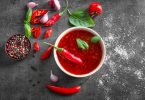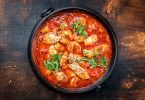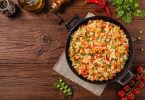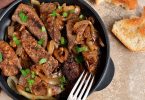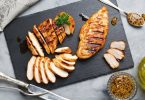Food photography is a great way to capture the presentation and deliciousness of food and share it with others. Whether you’re a professional photographer or just starting out, creating an appetizing food photo story can be a fun and rewarding experience.
Good food photography can make a dish look more appealing and make it easier to sell or market. With the right techniques and equipment, anyone can take amazing photos of their meals
Here are some tips on how to create an appetizing food photo story with your images.
Start With the Prep
Before you start taking pictures, make sure that everything is prepped and ready to go to achieve the end result you wish to see.
Start by choosing the right angle for your shot. Move around to find the best light and consider using natural window lighting instead of overhead lights or lamps. Pick a hero object and surround it with props that will bring out its best features. Modify the natural light for more flattering photos and use lines and shapes to create an interesting composition.
Make sure to limit the depth of focus so that all elements are in sharp focus. Finally, don’t overcrowd your photo with too many props; negative space can help draw attention to your subject.
Keep It Real
When taking pictures of food, it’s important to keep it real. Don’t try to over-style or over-process the images; instead, focus on capturing the natural beauty of the dish.
Try using natural light when possible and avoid using too much flash or artificial lighting, as this can make the food look unnatural and unappetizing. To get the most out of your lighting setup, use diffusers to soften the light and bounce it off walls or ceilings for even illumination. A well-composed photo of food can tell a story, evoke emotions, and even stimulate the viewer’s appetite.
Experiment with different angles and distances from your subject to find the best results. With a bit of practice, you’ll be taking amazing food photos in no time!
Get Creative With Angles
When taking pictures of food, don’t be afraid to experiment with different angles and perspectives. For example, you can shoot from above or below the plate, or even from the side. Take close-up shots for more detail.
You can also play around with depth of field by adjusting your aperture settings for more interesting effects. Experimenting with different angles will help you create unique and interesting images.
Additionally, using props such as plates, utensils, and other items can add depth and dimension to your photographs.
Use Props
Using props in your photos can help add context and interest to your images. Try incorporating items such as plates, utensils, napkins, etc., into your photos for added visual appeal. Just make sure not to overcrowd the frame so that the focus remains on the food itself.
For example, if you are taking a picture of a salad, you may want to use a light-colored plate or bowl to contrast with the vibrant colors of the vegetables.
Additionally, adding unique cutting boards or vintage objects can add character and depth to your photos. Finally, don’t forget about small details like flat lay paper backgrounds or dried oranges for added texture.
Edit Carefully
Once you’ve taken all of your photos, it’s time to edit them carefully in post-production software such as Adobe Lightroom or Photoshop. Make sure not to over-edit your images; instead, focus on making subtle adjustments such as increasing contrast or sharpening details where necessary. Also be sure not to use any filters that could make the colors look unnatural or unappetizing in any way.
Share Your Story
Finally, once you have edited all of your photos it’s time to share them!
Posting them on social media platforms like Instagram or utilizing a Customer Feedback Platform is a great way to showcase your work and get feedback from other photographers and food lovers alike!
Also publish your photography works on your portfolio website. If you don’t have one, get started with Pixpa Website builder. You can create a Food Photography Website and Showcase Food Stories on the website.
With its customizable themes and intuitive tools, you can quickly create a professional portfolio to showcase your work. To get started Here are some food portfolio website examples you can refer
Creating an appetizing food photo story doesn’t have to be difficult – just remember these tips and have fun experimenting! With practice and patience you will soon become a master at capturing delicious dishes in all their glory!



